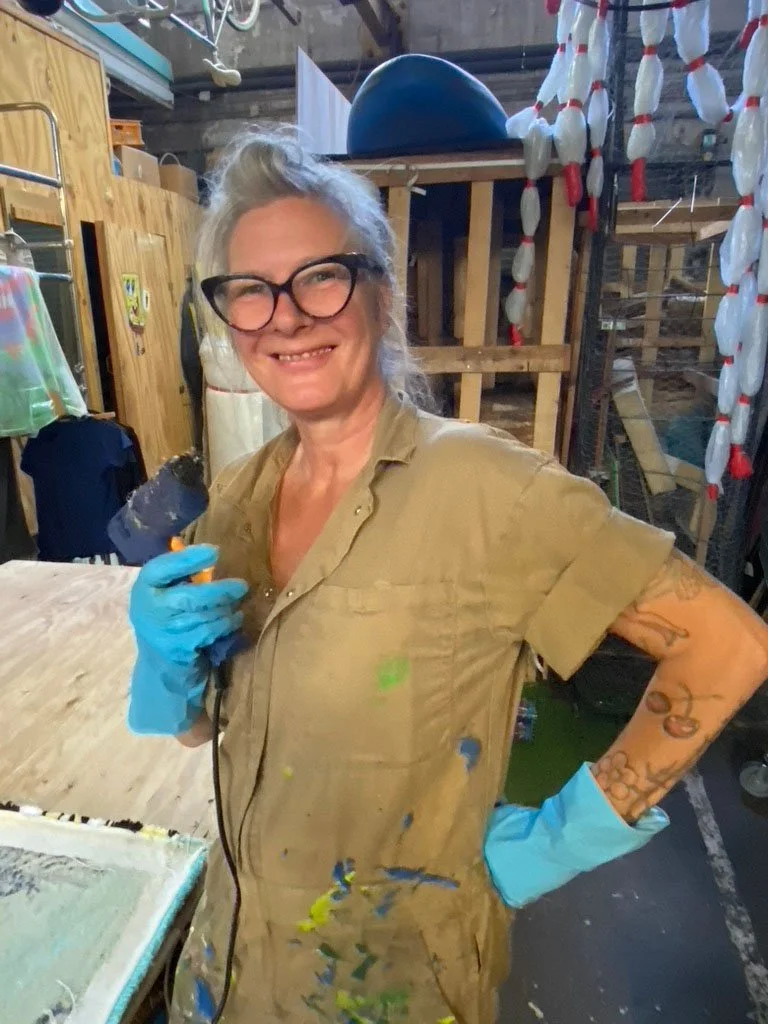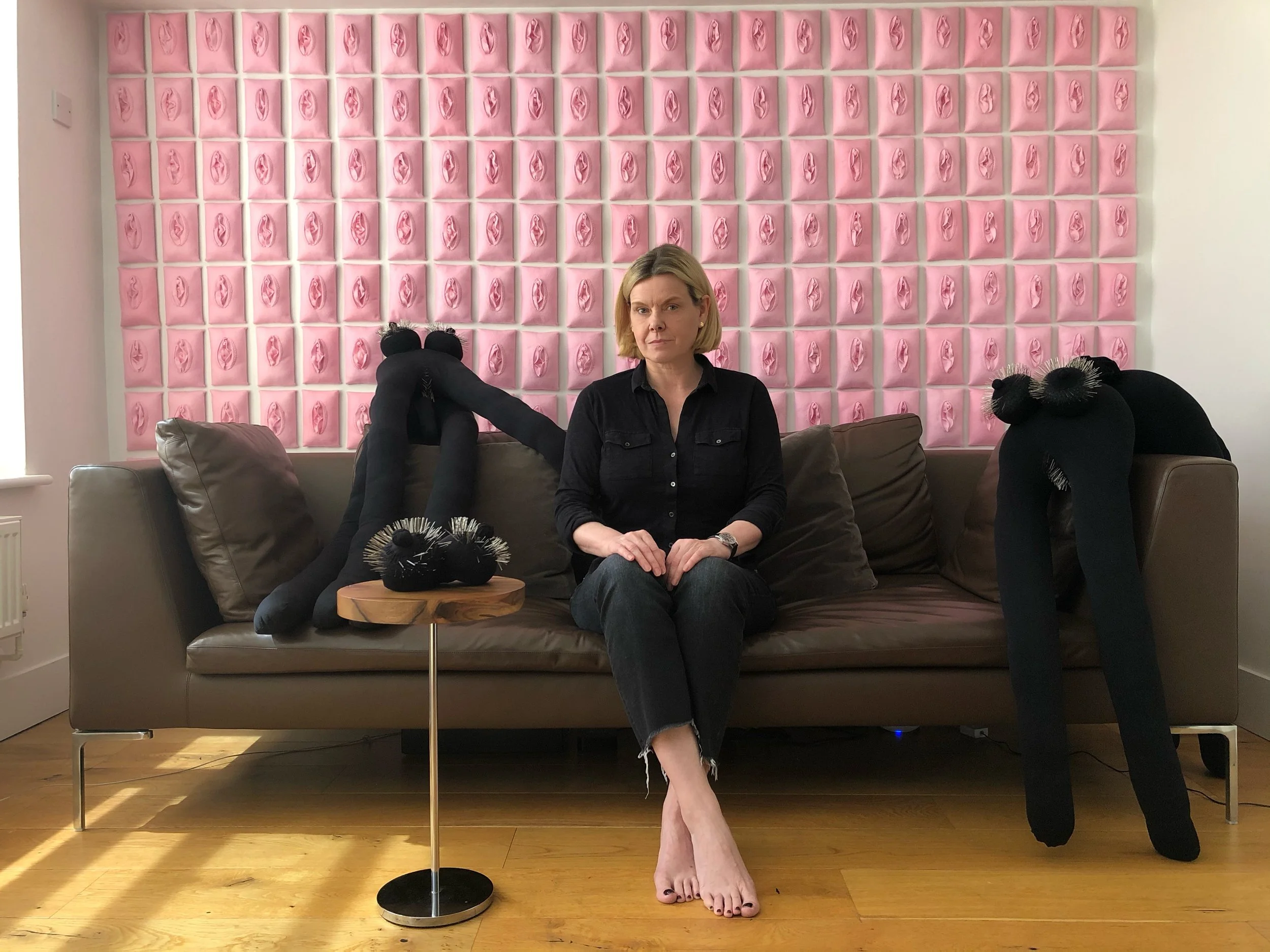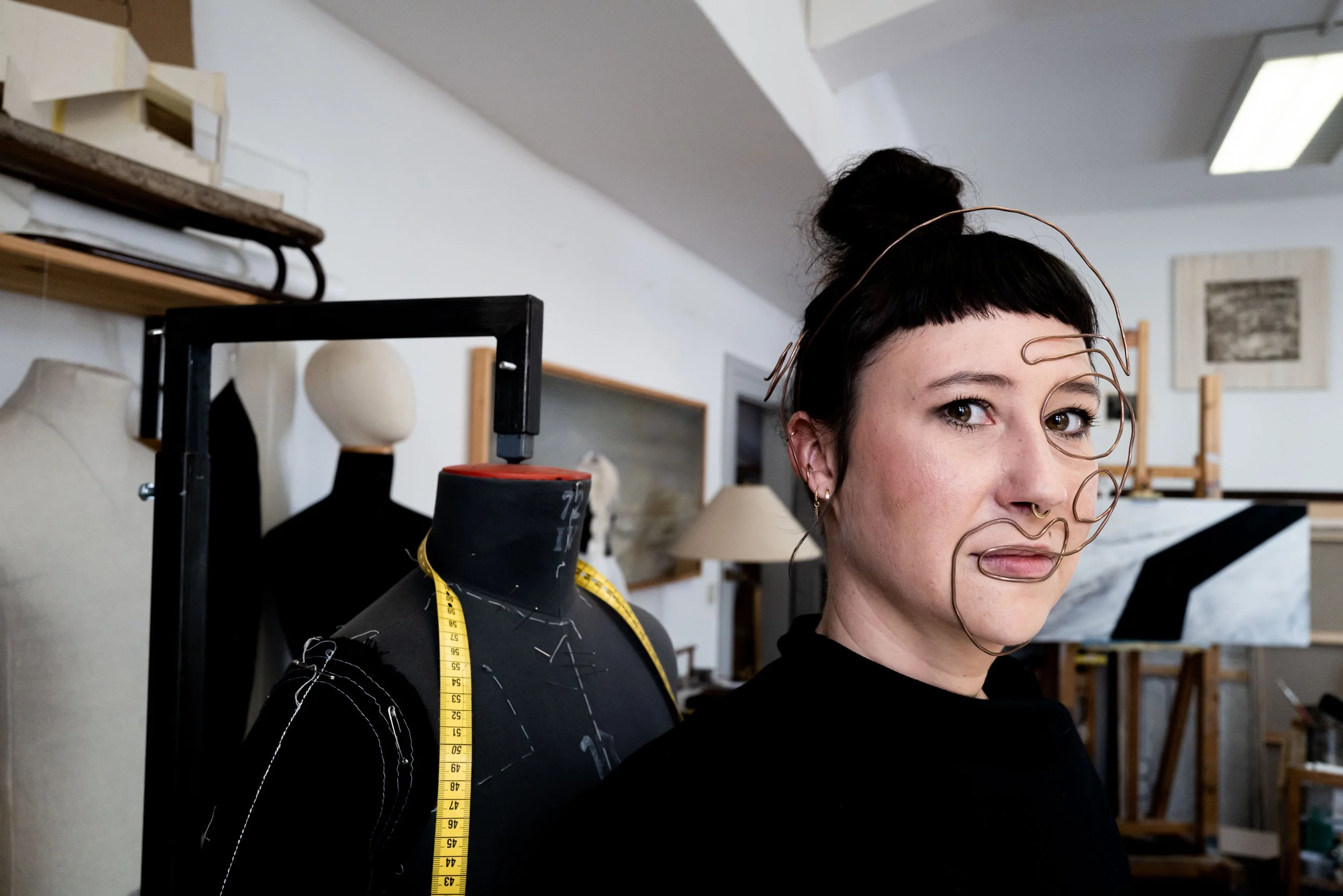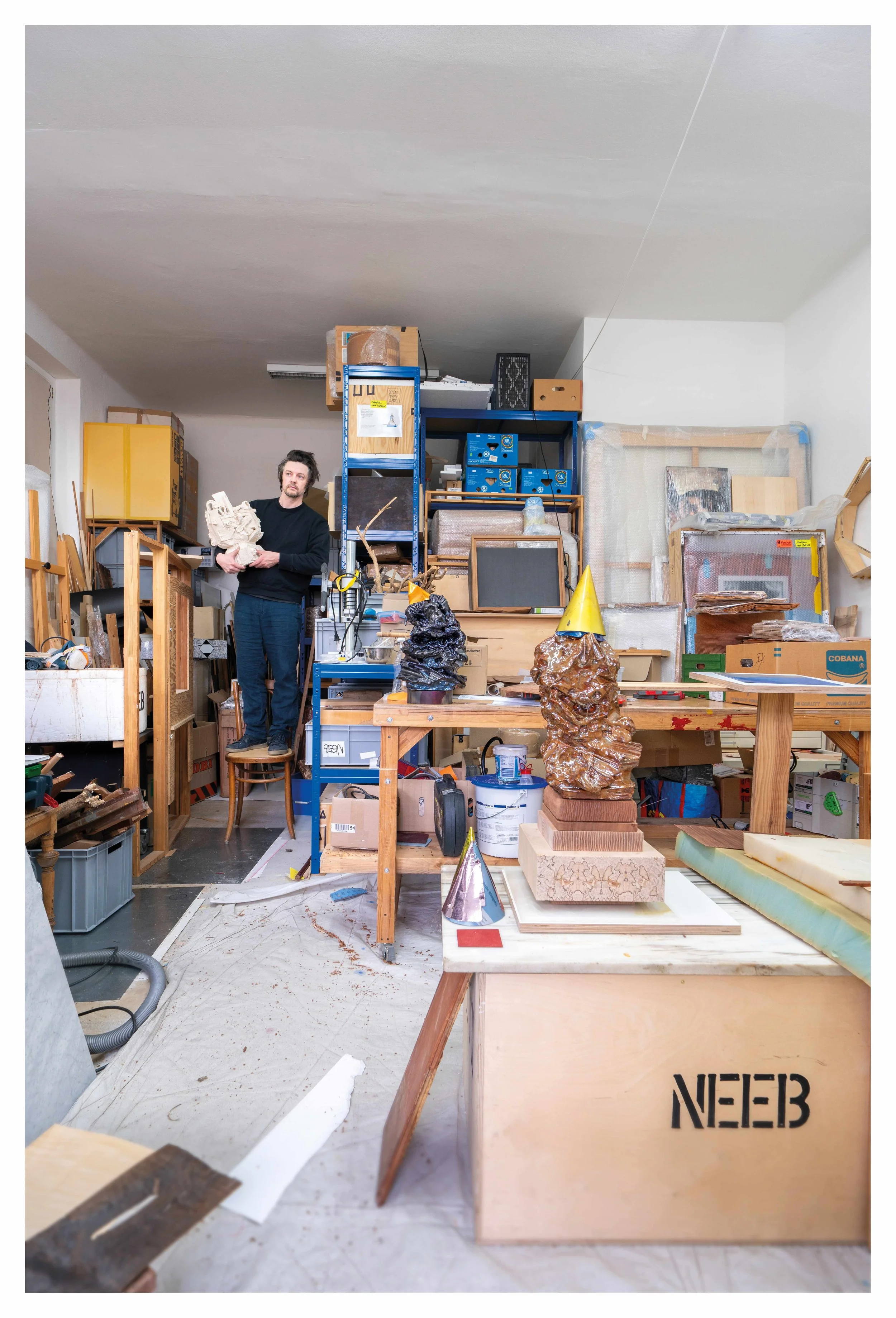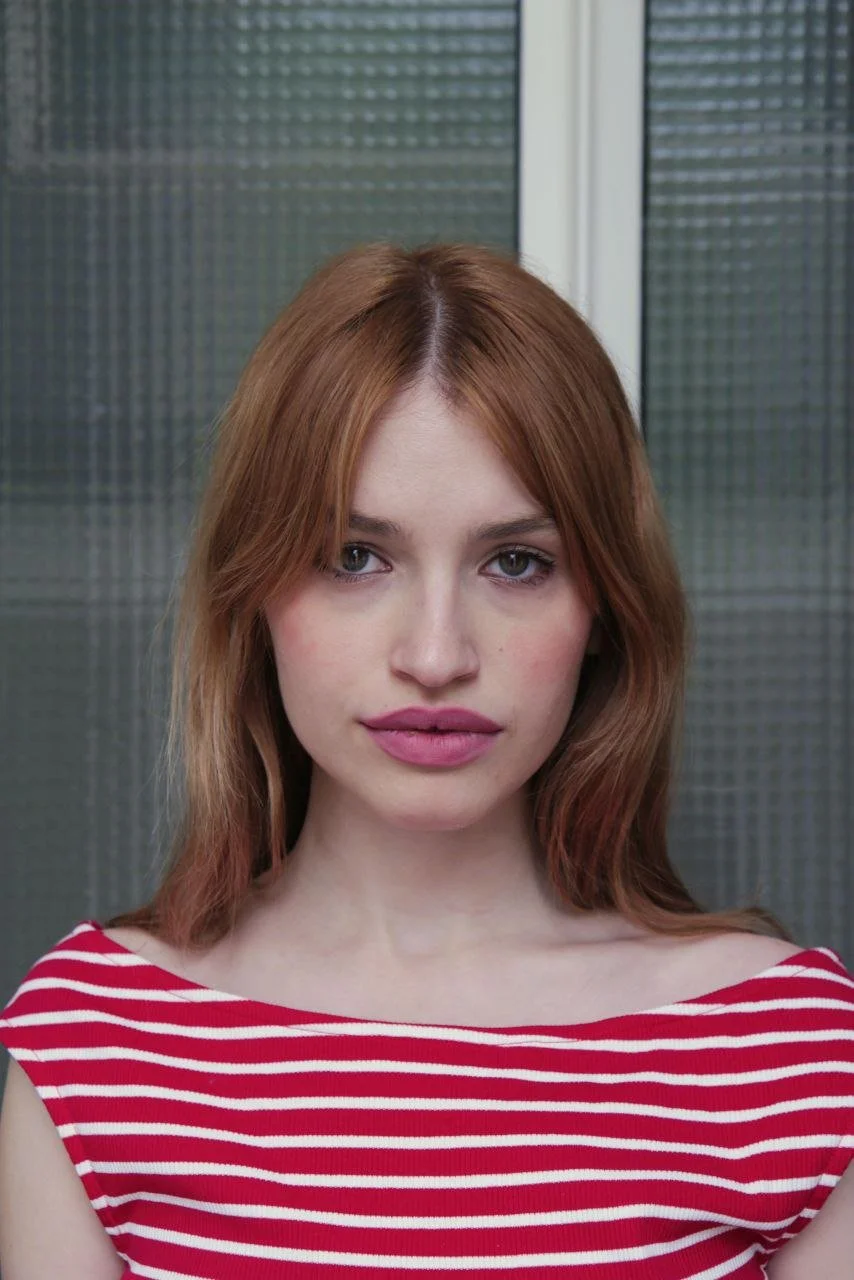artists
Anja Fußbach
creates bold, humorous works using unconventional materials, pop culture references, and recycling experiments. Her playful yet pointed practice challenges the boundaries between high and low culture, while subverting gender stereotypes and societal expectations around beauty, sexuality, and femininity. With her feminist, trash-meets-high-art aesthetic, Fußbach embodies the spirit of Play & Pleasure, disrupting norms through wit, sensuality, and resistance.
Marion Mandeng
is a contemporary artist based between Berlin and London. Her work explores human behavior and societal structures through a feminist lens, often addressing the absence of female perspectives in dominant narratives.
By reworking objects traditionally coded as masculine, Mandeng opens space for feminine presence, symbolism, and power. Influenced by psychoanalysis and surrealism, and shaped by her experience as a mother of three daughters, her vibrant, symbolic works weave personal history with political critique.
Lerato Shadi
is a South African artist whose work explores identity, memory, visibility, and critiques of Western historical narratives. Using performance, video, and textile art, she amplifies marginalized perspectives, especially those of Black women.
A central element of her practice is the body as a carrier of history and experience, revealing how the Black female body is both hyper-visible and systematically overlooked. Shadi often incorporates her native Setswana language to assert cultural identity and challenge linguistic power structures.
Linda Steiner
is a Vienna-based artist whose practice blends introspection with urgent sociopolitical themes, including feminism, classism, and racism. Largely self-taught, Steiner approaches her work with fearless curiosity, constantly exploring new materials and techniques across oil painting, sculpture, digital art, ceramics, and large-scale murals.
Her refusal to follow traditional institutional paths and her commitment to independent experimentation embody the spirit of Play & Pleasure: bold, self-determined, and politically engaged.
Joséphine Sagna
a German-Senegalese artist living and working in Bayonne, South France. Her vibrant, large-scale works explore identity, racism, gender roles, and empowerment, centering the Black female body not as an object, but as a site of dignity, intimacy, and self-determination.
Combining acrylic, oil, spray paint, marker, and chalk, Sagna creates a powerful visual language influenced by social media and the digital self-representation of Black bodies. Her work is both poetic and political, challenging dominant gazes and reclaiming space for reflection and empowerment.
photo by: Sören_Meffert.
florian huber
an artist known for his sculptural works, installations, and objects that blend playful "post-pop" aesthetics with sharp social commentary. Think: confetti smileys, balloons, and neon piñatas, imagery that feels light at first glance but reveals deeper reflections on consumerism, social divides, luxury, and impermanence.
Since the pandemic, Huber’s work has become an increasingly critical mirror of global inequalities and societal excess. His ability to seduce and disturb simultaneously makes him a vital voice in Play & Pleasure, opening to the public October 24th, 2025 in Heidelberg.
Carolina Amaya
is a Colombian artist whose work centers on the body as a migratory, sensuous landscape shaped by displacement, ancestry, and transformation. Drawing from indigenous cosmologies, Colombian craft traditions, and Berlin’s subcultural codes, her sculptures, drawings, and installations explore identity as something fluid, fragmented, and continuously reimagined. Organic materials like bijao leaves, fique fibers, and human hair meet leather and metal, creating tactile spaces where cultural memory collides with contemporary experience.
Deeply sensuous and politically charged, her practice challenges dominant narratives around identity, gender, and cultural hybridity. The body in her work is not a fixed form, but a force in constant flux, wild, erotic, sacred, and sovereign.
Ivana de Vivanco
Ivana de Vivanco is a Chilean-Peruvian artist whose work interrogates the visual legacies of power, colonialism, and Western modernity. With sharp wit and a deliberately acidic palette, she dismantles canonical iconographies through speculative fictions that are at once grotesque, humorous, and deeply political. In her paintings, sculptures, and films, fallen heroes, failed empires, and absurd rituals populate a parallel epic, one in which the collapse of dominant narratives becomes fertile ground for new mythologies.
Rooted in painting but in dialogue with psychoanalysis, literature, theatre, and natural science, de Vivanco’s practice critiques selective memory cultures and opens space for healing, both historical and personal. Her biographical experience between Latin America and Europe informs her exploration of hybridity, the female body, and decolonial futures. Whether using satire or surrealism, her work challenges what, and who, gets remembered, inviting viewers into a world where history is re-staged, re-embodied, and radically reimagined.
Mina Mania
is a Berlin-based artist whose work blurs the boundaries between painting, sculpture, installation, costume, and public art, always in service of liberation, self-expression, and collective healing. At the heart of her practice is Nana, a recurring figure who embodies strength, softness, and transformation. More than a symbol, Nana is a living archetype: a shapeshifting companion, spiritual guide, and mirror of inner sovereignty. Through vivid color, sensual materials, and immersive worlds, Mina Mania creates spaces where vulnerability and power can co-exist.
Her art speaks to personal and collective journeys, embracing identity, resilience, and emotional depth. With roots in feminist performance, street art, and ritual practice, Mina’s work celebrates the unruly, the intuitive, and the radically free. She calls this spirit Nanarchy, a call to resist conformity, reclaim softness, and live beyond expectation. Both playful and profound, her work invites viewers to enter a space of resonance, where healing becomes possible and freedom takes shape.
Sebastian Neeb
Sebastian Neeb’s work dismantles the rituals of power, politics, and status with sharp humor and playful material mastery. By parodying heroes, inventing absurd trophies, and exposing the performativity of attention, he subverts the masculine-coded tropes of dominance and authority.
His irreverent strategies resonate with the female gaze by opening space for vulnerability, play, and alternative ways of seeing, undermining the systems that traditionally exclude it.
Lisa Maria Dorfschmid
Lisa Marina Dorfschmid studies Fine Art at the State Academy of Art and Design Stuttgart in the class of Christian Jankowski, as well as Art Theory and Media Philosophy at the Karlsruhe University of Arts and Design. In her conceptual practice, she examines the construction of reality, the body, and identity within the tension between physical presence and digital reproduction.
With Silver Venus, Dorfschmid addresses the transformation of the female body between idealisation and alienation. The photograph presents an ambivalent figure, both vulnerable and powerful, whose body becomes a projection surface for societal notions of beauty and aging. Through its staging and cool aesthetic, the work becomes a contemporary allegory of femininity, surface, and transience
Boglárka Balassa
Boglárka Balassa’s woven and plant-dyed textiles explore nature, cultural memory, and transience. Through techniques such as botanical dyeing, she reflects on origins, breath, and isolation — themes present in series like Observation of Breath and Problem of Isolation. Works including Little Textil II, Dissolving, and Dissolving in Myself II evoke the dissolution of matter and identity and the transformation of inner states.
Balassa uses textile structures as metaphors for movement and connection. Color appears not just as surface but as an echo of historical dye traditions and forgotten materials. By combining found objects, natural pigments, and woven forms, she creates spaces that are both introspective and quietly political. Her works invite viewers to pause, breathe, and sense the subtle links between nature, color, and textile form.
BARBARA GUTHY &
SOANA SCHÜLER
Angelika Dirscherl
Angelika Dirscherl presents The Dryads, a body of work that offers captivating interventions into our perception of material, value, and narrative. Mounted and framed, her small paper collages contrast their modest size with a richly layered visual space. From everyday scraps, fragments, and found papers, Dirscherl constructs her own cosmic mesh: cutting, gluing, drawing, and weaving to set in motion what viewers might otherwise take for granted.
Her works often move along the boundary between image and text, surface and object, language and structure. Drawing, writing, folding, and cutting are integral parts of her creative process. Subtle mythological and organic references give rise to small forests, entwined bodies, and hidden stories.
A delight in discovery and reinterpretation, the visibility of the concealed, and the interplay of identity and materiality make her works poetic reflections on perception, creativity, and the power of everyday materials.
Sophie Bauhaus
Sophie Bauhaus presents collages that operate at the intersection of materiality, corporeality, and social reflection. Through carefully selected fragments, layers, and overlays, she creates compositions that challenge familiar perceptions and open new spaces of meaning.
Humor, irony, and playful strategies permeate her work, inviting viewers to critically examine traditional gender roles, identity constructs, and social norms. Balancing form, color, and structure, her collages offer both sensual and intellectual engagement.
Bauhaus’s works establish a dialogue between viewer and material: surface, depth, and fragmentation become mirrors of societal perspectives while simultaneously creating space for new viewpoints and female positions.
kLEID I rAUM I kAndes
Textiles store traces: scents, folds, warmth. They take on form and give form back. Clothing is a second skin, a temporary body, both shelter and camouflage. It shapes and conceals, it holds and releases. In my textile works, fibers are dissolved, intertwined, stitched, and displaced, an organism between deconstruction and reordering, between presence and absence, support and dissolution.
Each fiber carries both memory and renewal. Through process, spatial bodies emerge, a transitional field between garment and architecture. The material unfolds into a landscape of fibers, a woven terrain of body and space.
With their work Knorrender Samtling, Soana Schüler and Barbara Guthy create a sensitive yet subversive play with materiality, natural forms, and social constructs. From ivy roots and broom pods emerges a hybrid object that oscillates between plant growth and bodily metaphor.
The title humorously alludes to an imaginary being, half plant, half body, opening a space for associations between nature, gender, and transformation. This poetic liminal figure reflects the artists’ central aim: to dissolve binary norms and reveal organic, fluid forms of identity.
Suspended freely in space, Knorrender Samtling unfolds a bodily presence that is at once delicate and powerful. In their practice, Schüler and Guthy weave together feminist perspective, ecological awareness, and subtle irony, inviting viewers to consider nature as a collaborator in artistic and societal renewal.
CEDRIC PINTARELLI
With Tapetto Macchiato 1.1, Cédric Pintarelli presents a work in which color, form, and texture merge into an almost corporeally tangible composition. The nuances and layers evoke skin, flesh, and organic structures, giving the painting a sensuous presence.
Pintarelli explores the tension between intuition and concept: color fields, subtle gradations, and flowing transitions create a gentle movement that draws the viewer’s attention to materiality, texture, and corporeality. The work opens a space in which color is experienced not only as a visual medium but also as a metaphorical reflection of body, emotion, and perception.
